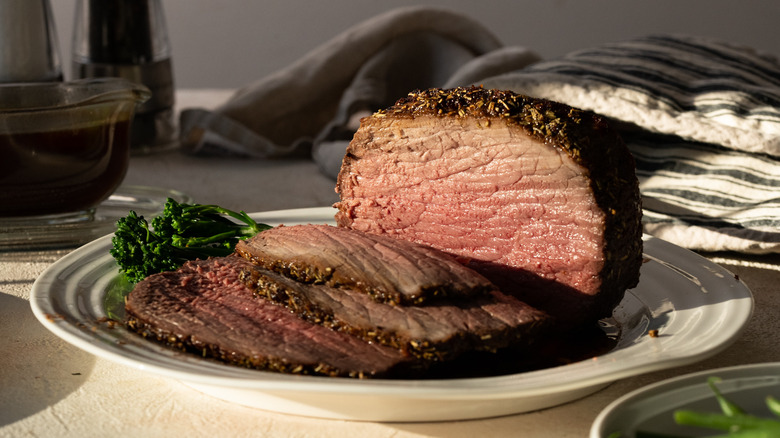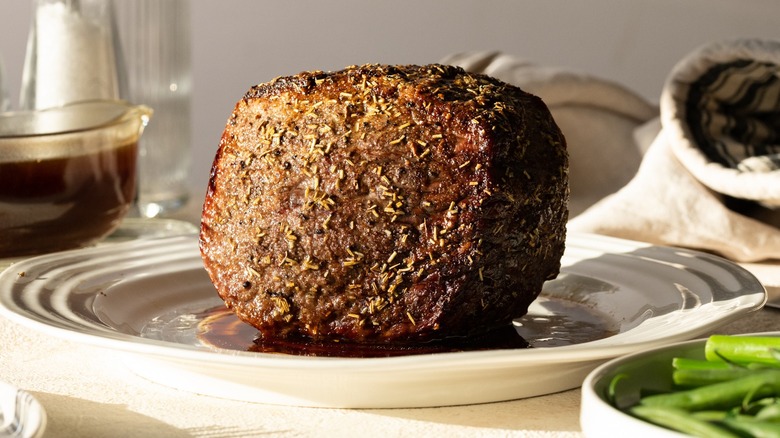The Temperature Trick For Perfect Slow-Roasted Eye Of Round Roast
If you're looking for an economical cut of beef, eye of round can be a budget-savvy alternative to pricier selections like prime rib or tenderloin. Sourced from the upper hind leg of the cow, eye of round is composed of lean muscle, which means that it can be tough and prone to drying out. But just because a cut of steak is known to be tough, that shouldn't deter you from giving it a try. Often, it just needs a little extra attention to shine on the dinner table.
Cooking the perfect slow-roasted eye of round is all about time and temperature. Starting with your roast at room temperature, pre-heat your oven to 500 degrees Fahrenheit. While the oven is heating, season the meat with your preferred spices and herbs, then set it on a foil-covered roasting pan. When the oven comes to temperature, roast the beef for 15 minutes. The intense, quick blast of heat acts as a browning step — like a sear on the stovetop — and helps caramelize the exterior for a richer, more savory flavor.
When those 15 minutes are up, drop the temperature down to 250 degrees Fahrenheit and let the low-and-slow method take it from there. You'll have a perfectly cooked roast in about 1½ hours — or when an internal thermometer reads around 140 to 150 degrees Fahrenheit for medium to medium-well doneness. Remember that carry-over cooking will continue as your meat rests. For more pink in the center, pull the roast out when it reaches around 130 degrees Fahrenheit.
Tenderizing the tough cuts
While this temperature trick can prevent a dreaded dry roast, there are certain types of steak you should be tenderizing, and eye of round is one of them. By pairing tenderization with the proper roasting technique, you get a foolproof formula that ensures a winning bite. A brine is one easy way to infuse extra moisture and flavor into your round, not to mention make it more tender. A brine — which can be done as either a wet brine or a dry brine — exposes the meat to high levels of salt (and other aromatics or spices) that season it from within. Not only does brining create a greater depth of flavor, but it also tenderizes the meat.
The salt helps break down tough muscle fibers while also denaturing the meat's proteins, allowing the cells to swell and hold more water. After a few hours (or a night) spent in the brine, your eye of round is more likely to retain what little moisture the cut has naturally. You could also whip up a more traditional overnight marinade, ideally with a salt and citrus element for optimal tenderization. Once you've perfected cooking this notoriously tough cut, you'll find that it pairs beautifully with flavorful roasted vegetables, twice-baked potatoes, or Ina Garten's maple-roasted carrot salad.

